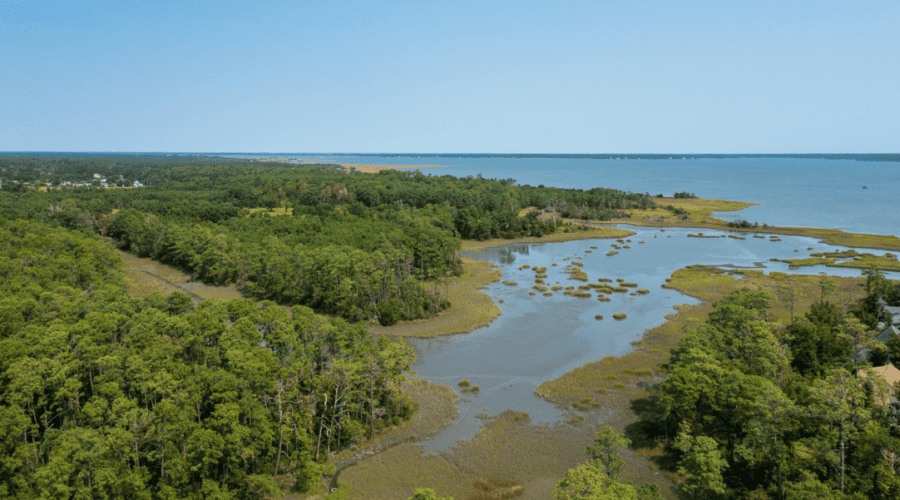World Oceans Day is a time to consider the threatened underwater meadows that are home to important marine species and the foundation of the coastal economy, writes Ryan Speckman, co-owner and co-founder of Locals Seafood in Raleigh.
Featured
Grants may help troubled Bertie County get back to nature
Lewiston Woodville in Bertie County has poverty and obesity-related health challenges, but one small nonprofit is working to get young people outside and healthier.
Advocates cite risks of planned shipping channel project
The proposed deepening and widening of the Wilmington Harbor to accommodate larger ships is the latest in what Cape Fear River advocates say is a long list of threats.
FarmsSHARE connects growers, underserved communities
FarmsSHARE, a statewide food assistance program that was meant to be temporary during the pandemic, has grown into a network that continues to feed those in need and supports small farms.
Microfossils major part of museum’s public science project
Coordinators of the N.C. Museum of Natural Sciences’ Cretaceous Creatures public science project aim to reach eighth grade classrooms in all 100 counties this coming school year.
Officials, public celebrate new Jockey’s Ridge visitor center
Officials last week celebrated the recently completed $2 million renovation of the visitor center at Jockey’s Ridge State Park.
Angler Chris Ellis says time on the water makes you better
Chris Ellis of Sneads Ferry, who loves to fish and is successful at it even when others aren’t catching, advises focusing on the experience for personal growth.
Analysis finds wreck on Currituck Beach may be Metropolis
East Carolina University researcher Matthew Pawelski used computer modeling and imaging to make precise comparisons of wreckage and known details of a lost former Civil War naval vessel refitted commercial use.
AECs: A way for people to promote responsible development
North Carolina has a process the public can use to nominate an Area of Environmental Concern and protect the natural and cultural treasures in coastal areas that belong to everyone.
Topsail Beach Planning Board votes no on rezoning request
The town planning board Wednesday was unanimous in recommending that commissioners deny a request to rezone property at the south end of town now zoned conservation.
Coastal Enhanced Weathering: A promising climate solution
UNCW professor Larry Cahoon writes that a nature-based climate restoration solution that his lab is collaborating on may eventually be able to capture a billion tons or more of carbon dioxide each year while reducing ocean acidity and helping to protect coastlines.
Corps allows channel sand for Wrightsville Beach project
The Army Corps of Engineers will exercise a federal Coastal Barrier Resources Act emergency exception and take sand for Wrightsville Beach nourishment from the Masonboro Inlet/Banks Channel borrow source instead of an offshore borrow site.
Residents ask for more protections of Beaufort watershed
As potential development looms, some Beaufort residents are asking the Coastal Resources Commission to extend protections for Gibbs Creek watershed in North River.
Your perfectly mown lawn may be harming pollinators
An awareness campaign called “No Mow May” is urging people not to mow their lawns this month, or even this whole season, as a way to help make sure that pollinators have enough to eat.
After 200th celebration, Ocracoke Light set for restoration
Thursday marks the 200th anniversary celebration of the Ocracoke Light Station, an event to be livestreamed on Facebook, and officials look to a $2 million project to preserve the historic site amid rising sea levels.
Park service seeks 10-year dredge, beach sand permit
For the first time in more than a decade, the National Park Service hopes to unclog two channels that passenger ferries and private boaters use to access Cape Lookout National Seashore, and place the material that is dredged onto the soundside beach in front of the lighthouse compound.

















